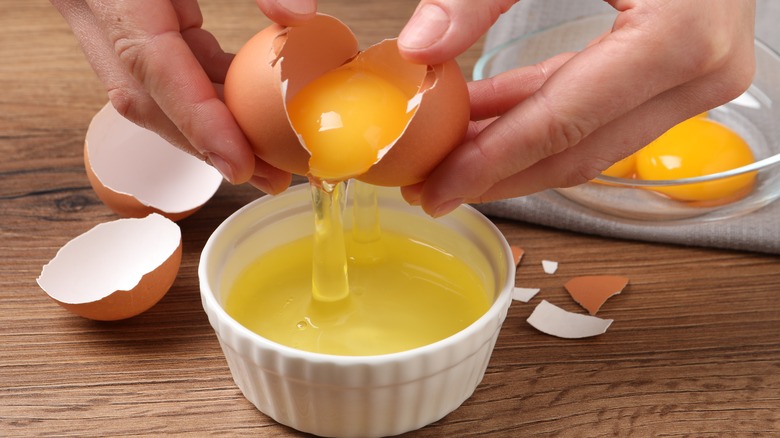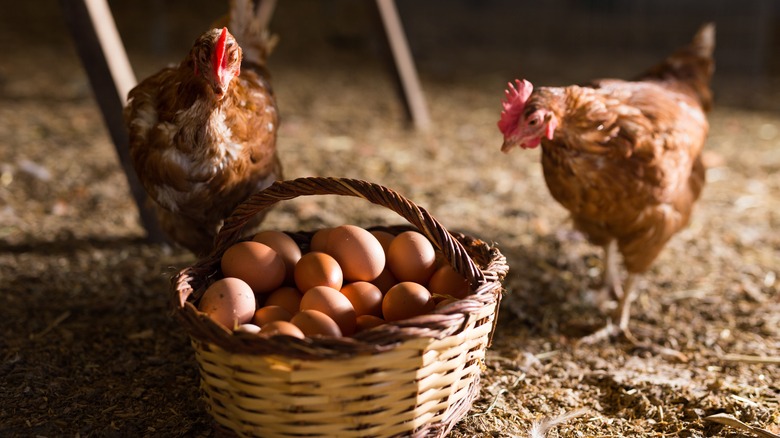How Meat And Blood Spots Form In Raw Eggs
Sometimes, the excitement over trying out a new way to elevate everyday scrambled eggs is easily shattered when you crack open an egg and are met with a streak of blood or a strange clump of meat alongside the yolk. This is a pretty common experience. These meat and blood spots, also referred to as inclusions, are unsightly but entirely safe to eat. All you need to do is cook the egg thoroughly, so don't let these inclusions deter you from putting your expert boiled egg hacks into practice.
Meat and blood spots come about during the egg formation process. Sometimes, loose tissues or blood from ruptured blood vessels will be picked up by the yolk or egg white and carried on through the rest of the egg-laying process. Depending on the breed, health, and environment of the producing hen, some eggs will be more likely to contain blood and meat spots. Chickens that lay white eggs, for example, are less likely to produce eggs with blood and meat spots than chickens that lay brown eggs. Additionally, diseases and stress can increase the frequency of inclusions.
Why some eggs have inclusions and others don't
As the egg is formed in the chicken's ovary, a sac filled with many blood vessels covers the yolk to ensure nutrients are accessible for development. Usually, the sac releases the yolk at a point referred to as the stigma, where there is almost no blood in the sac. When the yolk is released before reaching the stigma, blood vessels may rupture.
A rupture may lead to bleeding, and sometimes, that blood will stick with the yolk as it continues on its journey to the oviduct. Even if the sac releases the yolk at the stigma, disruptions in the egg formation process in the oviduct can also cause blood vessels to rupture and form blood spots in the egg. Similarly, meat spots are formed from loose tissue, typically from the ovary or oviduct, that is carried through the rest of the egg formation process.
The later in the process a blood spot forms, the more visible it will be in or at the shell. Over time, egg grading equipment, adjustments to breeding practices, and special attention to the health of egg-laying chickens have resulted in fewer eggs with blood or meat spots ending up on grocery store shelves, so don't reach for the egg substitutes in your kitchen just yet.

